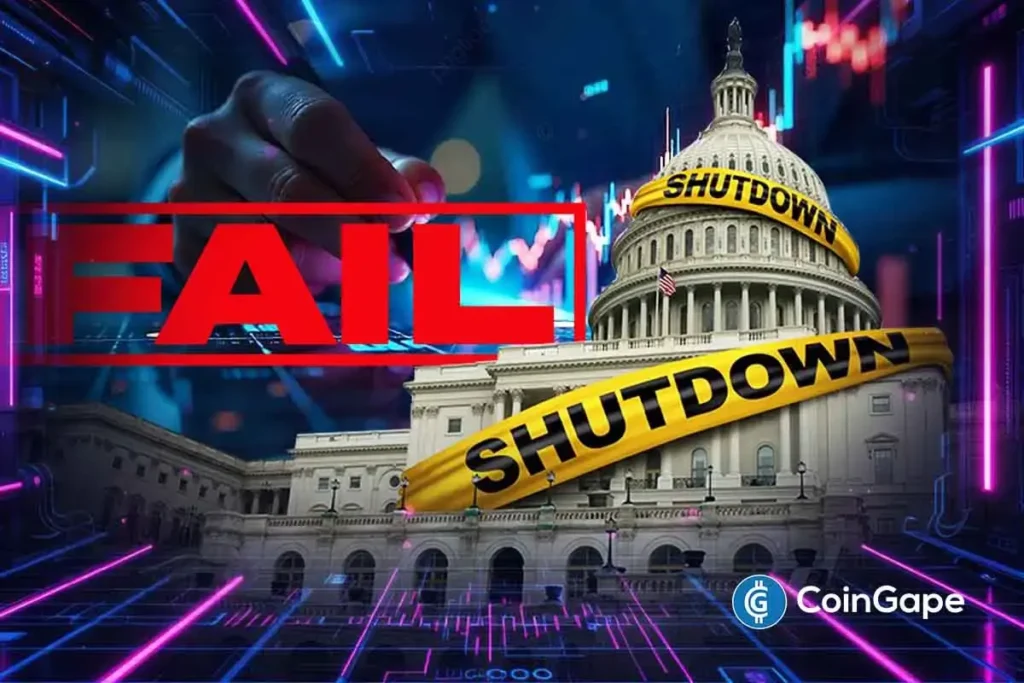U.S. Government Shutdown: What It Means for Federal Workers and the Economy
The recent U.S. government shutdown has marked a significant event in American politics, stemming from a budget impasse between President Trump and congressional Democrats. Officially commencing at 12:01 a.m. on a Wednesday, the shutdown resulted from lawmakers’ inability to reach an agreement on a crucial spending bill. As a result, thousands of federal employees have been furloughed, and core government services are suspended, leading to immediate disruptions across federal agencies.
Political Stalemate Fuels Shutdown
This shutdown is notable for being the first since 2019, which lasted 35 days and was primarily fueled by controversies over Trump’s proposed border wall. In the current climate, the disagreement centers on the Democrats’ demands for the extension of expiring health care subsidies and the reversal of recent Medicaid cuts introduced as part of tax and spending reforms. This deadlock in negotiations was brought to a head late Tuesday evening when the Senate rejected competing stopgap proposals from both parties. Notably, Republicans did not secure the necessary 60 votes to extend funding through November, while Democrats’ plan for funding through October also met with failure.
As the clock neared midnight without an agreement, White House Budget Director Russell T. Vought directed federal agencies to initiate their shutdown plans, suggesting that this standoff could be prolonged. The ramifications of this shutdown are far-reaching, as legislative progress on additional critical measures, such as the CLARITY Act, now faces fresh delays, effectively sidelined amid ongoing Capitol Hill gridlock.
Economic Impact and Market Reactions
The shutdown has triggered notable reactions in financial markets. As uncertainty looms, investors are bracing for potential economic repercussions, leading to a surge in alternative assets such as Bitcoin, gold, and silver. These assets have rallied recently, reflecting traders’ expectations that fiscal instability might bolster demand for more stable investment options. In fact, data from Polymarket indicated a sharp increase in shutdown odds leading up to the deadline, with predictions reaching as high as 85%.
Consequently, Bitcoin has extended a substantial rally, jumping from around $108,650 to nearly $114,000 within days. Analysts recognize the formation of a bullish double-bottom pattern, suggesting that as the stalemate continues, the cryptocurrency could see further gains. This activity highlights how political developments can swiftly influence market sentiment and asset performance.
Effects on Federal Employees and Services
For federal employees, the shutdown brings immediate and tangible challenges. Thousands are left without paychecks, creating financial strain for many families reliant on government jobs. The immediate closure of national parks and federal services further contributes to the chaos, limiting access and resources for the public. Furthermore, contractors working with the government may experience cascading delays, further complicating an already tense situation.
The impact of the shutdown extends beyond the federal workforce. Local governments and communities that depend on federal funding for critical services now face uncertainty. This disruption might stall ongoing projects and hinder economic activity in sectors reliant on government contracts. As closures continue, the strain on public services and the economy becomes increasingly evident.
Broader Legislative Implications
In addition to the immediate impacts on federal employees and services, the budget stalemate complicates broader legislative efforts. Without a resolution, crucial legislative initiatives are sidelined, obstructing progress on a variety of significant measures that could affect various sectors across the country. The failure to move forward with the CLARITY Act serves as an example of how legislative gridlock can displace critical policy discussions.
Lawmakers must grapple with this balance as they address not only the budget but also pressing public needs. The political consequences of the shutdown may ripple through future elections, influencing voter perceptions of party competence and priorities. The repercussions of this stalemate may, therefore, extend far beyond the immediate period of the shutdown.
Looking Ahead: Will Compromise Prevail?
The question now remains: how long will the shutdown last, and will both parties come to the negotiating table? History shows that prolonged standoffs can lead to diminishing returns for political leaders, signaling a potential shift in strategy as they weigh the consequences of continued inaction. The growing public frustration with such stalemates might compel lawmakers to seek compromise sooner rather than later.
Additionally, as the economic impacts unfold, there could be increasing pressure both from constituents and business leaders for Congress to resolve the budget deadlock. Ultimately, the capacity for bipartisan cooperation will be essential in navigating the complexities of this budget crisis, as both sides must recognize the repercussions of a prolonged shutdown on their political futures.
Conclusion
The current U.S. government shutdown serves as a stark reminder of the complexities and challenges of American political dynamics. The impasse has led to the furlough of thousands of federal employees, caused immediate disruptions in vital government services, and created economic uncertainty that has reverberated through financial markets. As the situation evolves, the focus must shift towards finding a resolution that not only addresses immediate funding needs but also sets the stage for more effective governance moving forward. In the meantime, the repercussions of this standoff will continue to unfold, affecting both federal employees and the broader economy as lawmakers grapple with the consequences of their decisions.


